Reading Time: 10 mins
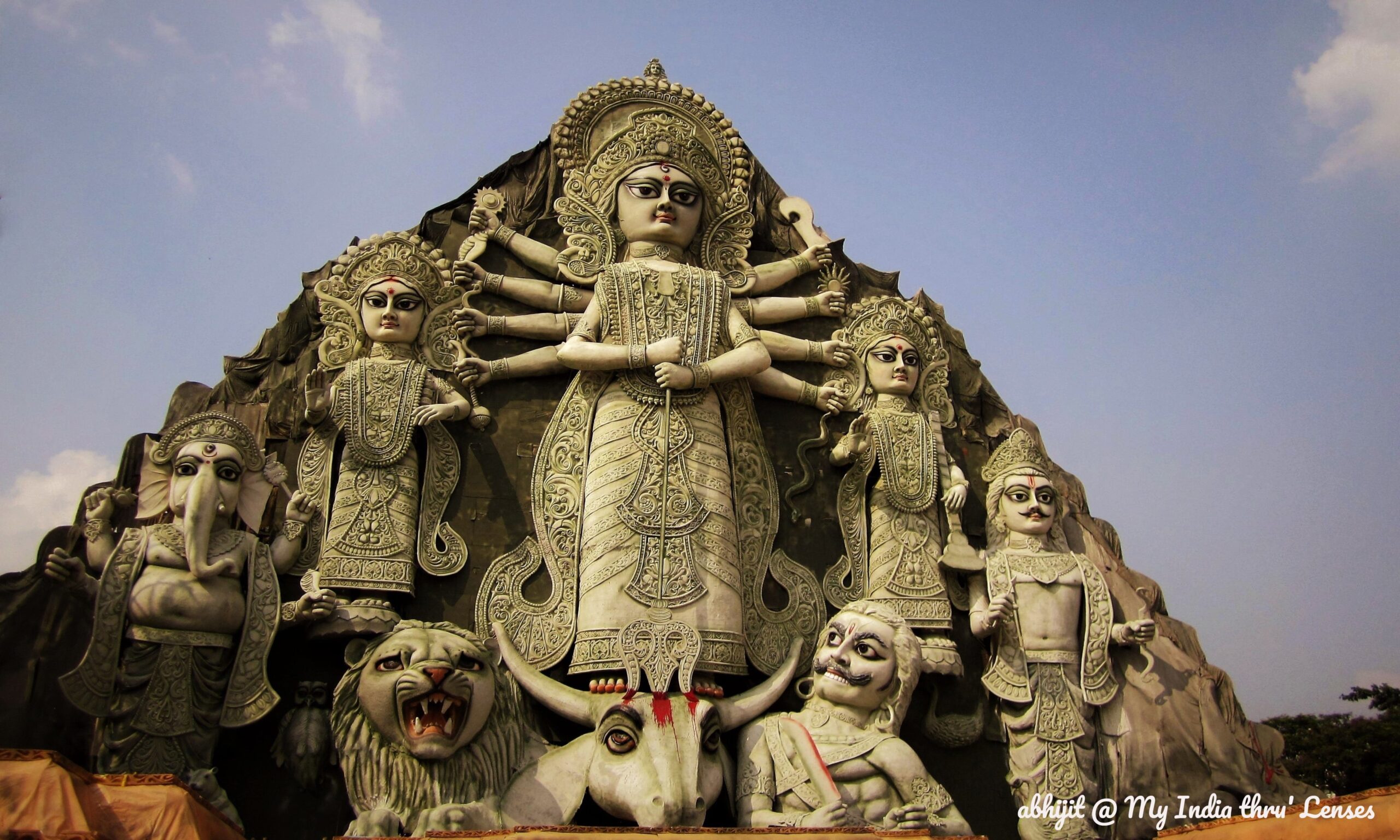
“Ya Chandi, Madhu Kaitabhaadi Daitya Dalani, Ya Mahishshonmoolini..”
With this song commences Durga Puja, the festival of Joy, the celebration of colour, the carnival of food, and the triumph of true Bengali madness. The period of Durga Puja celebration is the most awaited one for any Bengali. It hardly matters whether you are in Kolkata, or in some other city/ state of India or even abroad - this is something which connects all of us even though we are miles apart from each other. Although ‘Durga Puja’ has become synonymous with ‘Bengal’ or ‘Kolkata’, its root goes much deeper into our Hindu Sanatan Dharma, Mythology, Puranas & other sacred books. It’s the celebration of victory of good over evil which cannot be restricted only to a segment of people and hence, the same is celebrated by everyone irrespective of their religious belief.
Mythological Origin of Durga Puja

Before we talk about Durga Puja, we need to know who Devi Durga is. As per, Devi Mahatmya she is the manifestation of Supreme Mother Goddess or Adya Shakti. As per Hindu mythology, in order to demolish demon king Mahishasura (Buffalo demon), Trinity (Brahma, Vishnu and Maheshwar) accumulated their power and created Devi Durga. Demon king Mahishasura worshipped lord Brahma and got boon from him that no one in the universe other than a woman can defeat or kill him. After getting this boon he became furious and started torturing innocent people and saints. He even defeated Devtas (Indra & his gods) and captured heaven. Worried Devtas then went to Saint Katayan and prayed Trinity for help. In order to demolish the demon king, Trinity then worshipped goddess Adya Shakti and accumulated their power, which created Devi Durga. Devi challenged Mahishasura in a fierce battle and killed him. It is said that in the battle when Mahishasura got devastated, he requested Devi to give him moksha. Devi accepted his plea and gave him a boon that he will also be worshipped by the devotees along with her.

Though at present Durga Puja is observed in autumn, as per Devi Bhagavata Purana & other puranas, initially Durga Puja was celebrated in spring as Basanti Puja. As mentioned in the Krttivasa Ramayana, Lord Rama worshipped Devi Durga for her boon before killing Ravana. It was termed as ‘Akalbodhan’ since it was autumn that time and not spring. In due course of time, this Akalbodhan only became the “Durga Puja” which we all celebrate today.
Historical Origin of Durga Puja
Historically, worship of Goddess Durga in India dates back to ancient times. Goddess Durga, the embodiment of Shakti, is one of the most ancient pre-Aryan deities of India. The ‘Mahishasuramardini’ (goddess slaying buffalo demon) depiction of Goddess Durga represents a victory of good over evil. Sculptures of Mahishasuramardini have been found in several ancient archaeological sites including some famous ones like Mahabalipuram, Khajuraho and Ellora Caves. The oldest sculpture of Goddess Durga in India, dating back to the 1st-2nd century CE, currently resides in the museum of Mathura. It depicts Goddess Durga with four hands, killing a buffalo.
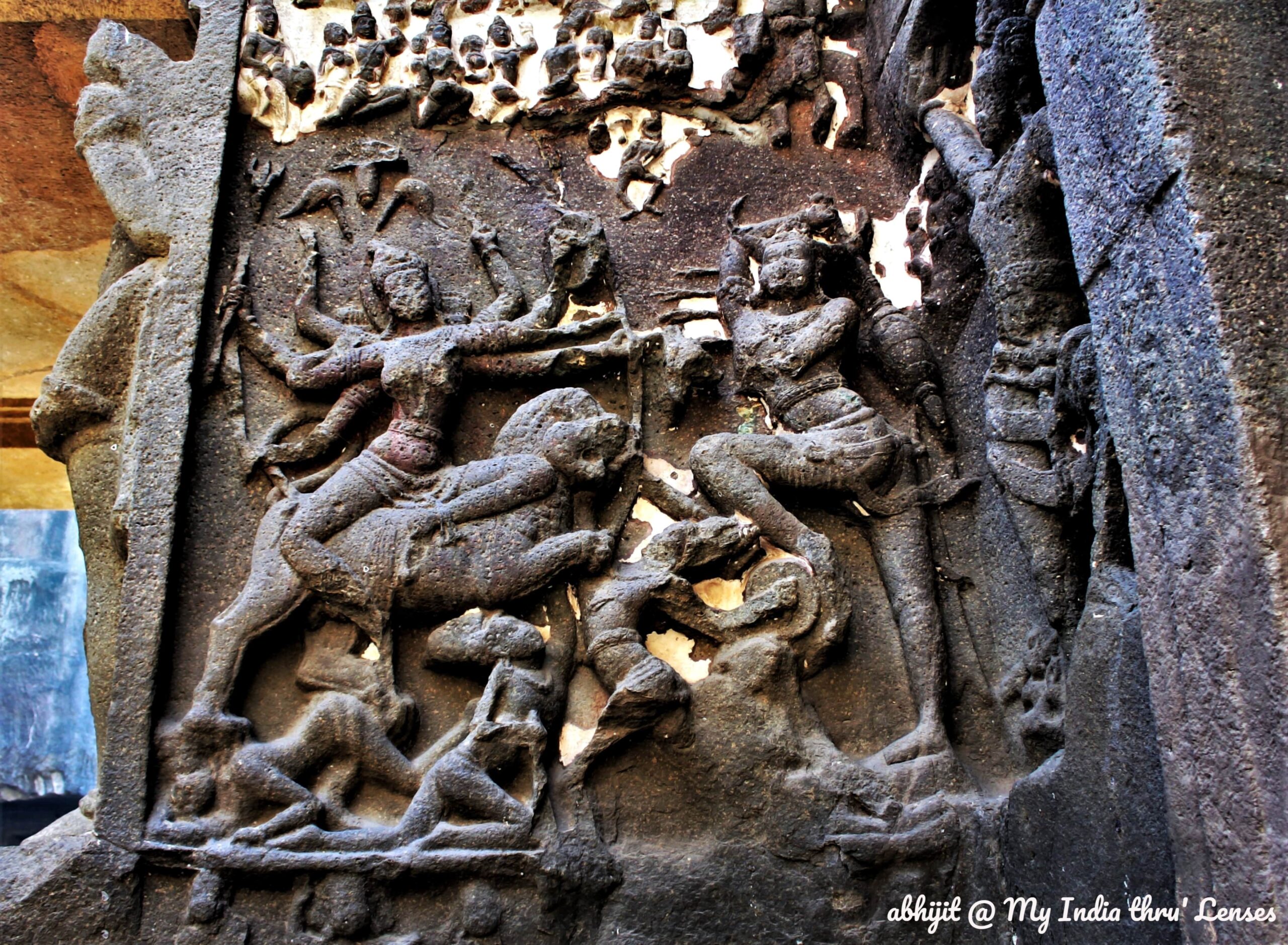
The famous sculpture of Mahishasuramardini at Kailash (or Kailasha) Temple, Ellora Caves: The sculpture could be observed directly opposite to the courtyard & just to the right of Lakhsmi Passage inside the temple. The Mahishasuramardini sculpture shows Goddess Durga, riding on her lion mount, just released three arrows towards Mahishasura. The top of the sculpture shows a host of gods witnessing the war.
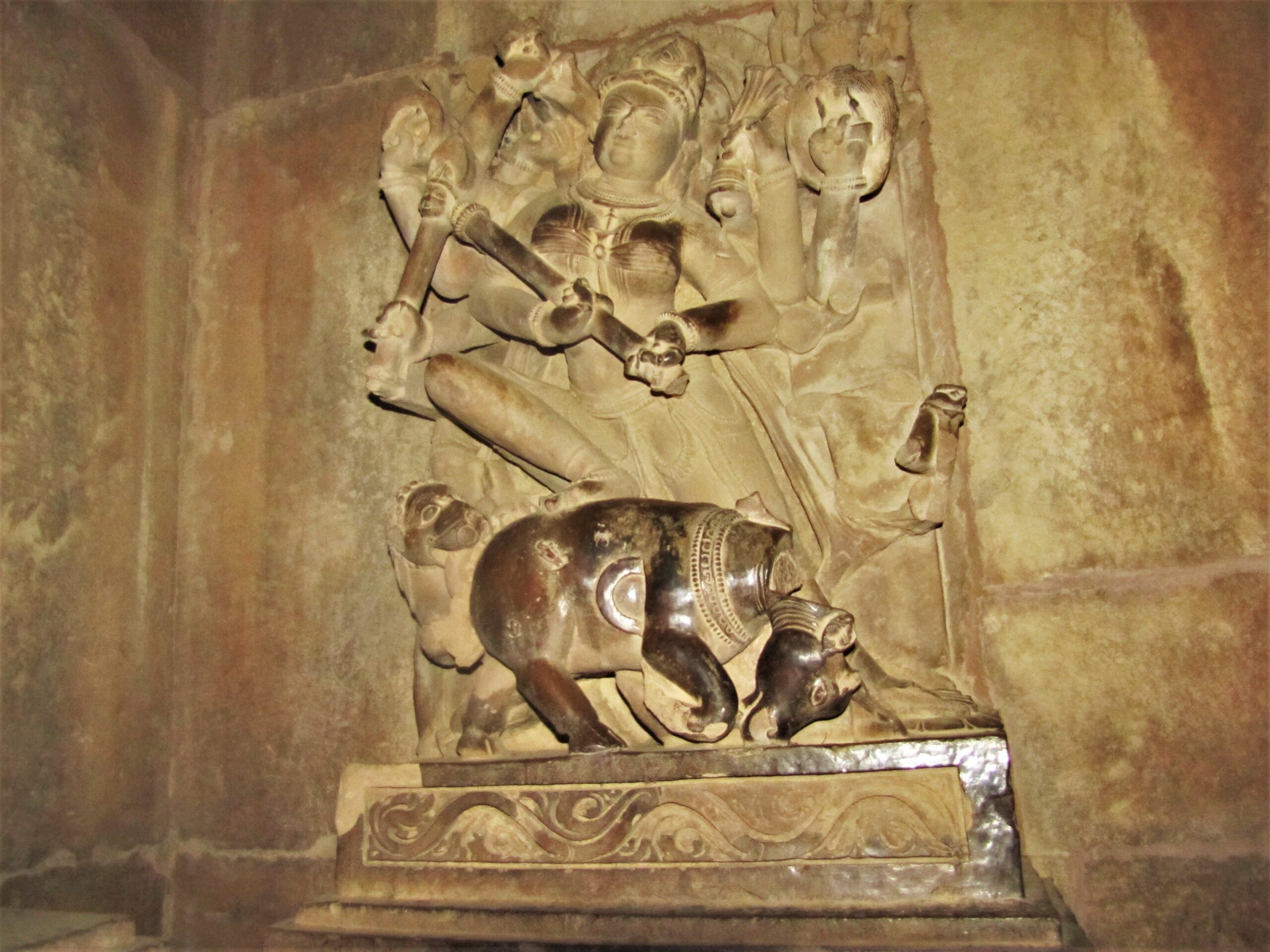
Mahishasuramardini sculpture (sculpture 10) at Lakshman Temple, Khajuraho: The sculpture also depicts Goddess Durga killing Mahishasura. The Goddess has 10 arms each carrying a weapon. The vahan lion is also shown. The buffalo can be seen with sliced head. | Attribution - Rajenver CC BY-SA, Wikimedia Commons
It is interesting to note that only the Aryans depicted the demonic image of Mahishasura and worship Goddess Durga as Mahishasuramardini. Dravidians do not celebrate Durga Puja as victory of goddess Durga over Mahishasura. More interestingly, Mahishasura is worshipped in South India. Mysore (Mysuru) in Karnataka, is believed to be named after him.
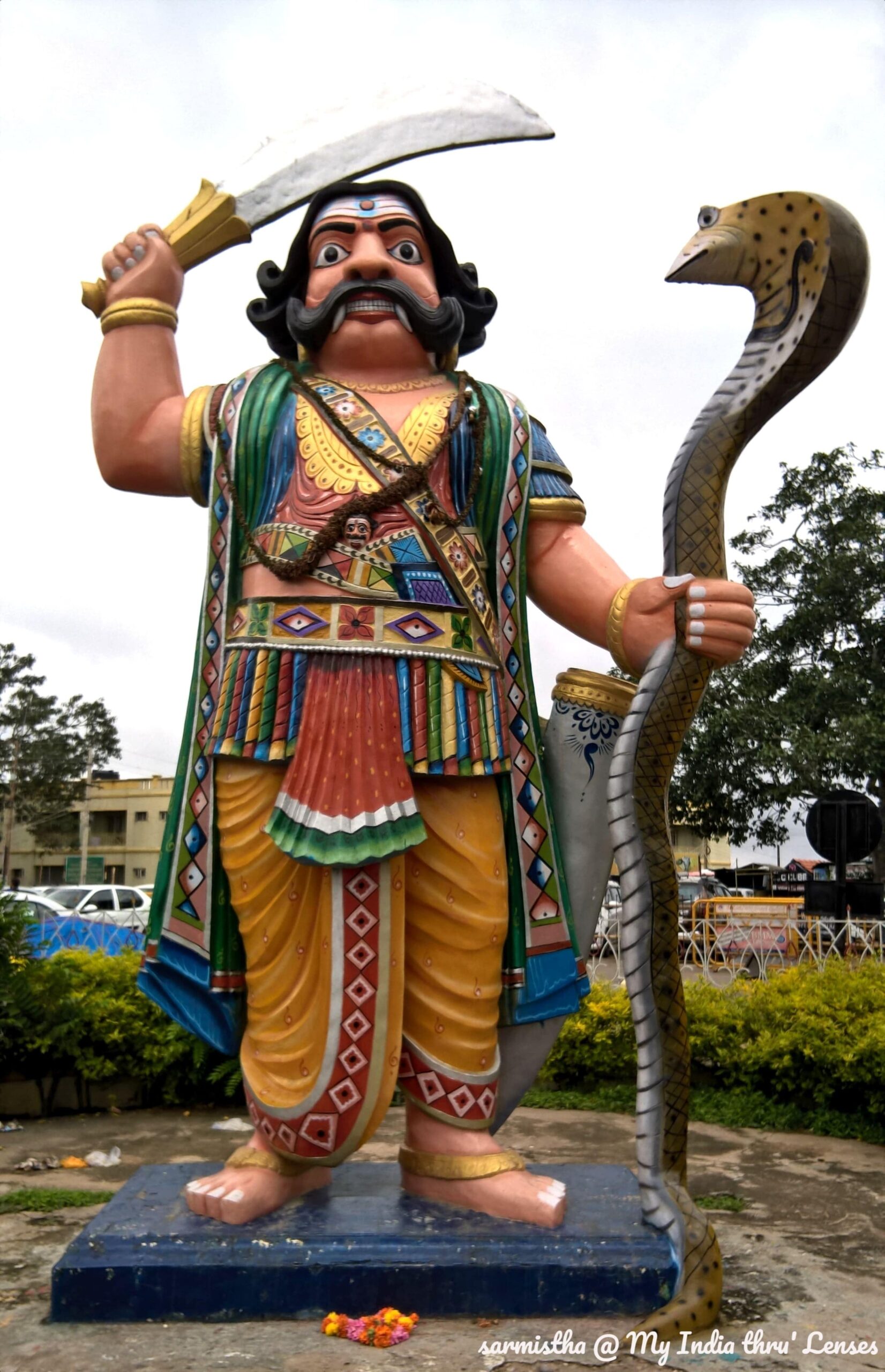
The various depictions of Goddess Durga across India, thus, appear a bit confusing. In Bengal or East India, Devi is predominantly worshipped as Mahishasuramardini, the 10-armed goddess slaying demon Mahishasura. The 10 arms of the warrior goddess symbolize 10 directions. It’s believed that Devi eliminates all the troubles and misfortune of her devotees and bestows blessings. In other parts of the country Devi Durga is mainly worshipped as Shera Wali (goddess riding a lion), where Devi is either 4 armed or 8 armed. Also, Devi is seen riding a lion in some of the idols, while a tiger in the others. As already stated, the southern states do not worship Goddess Durga as Mahishasuramardini. They celebrate Golu Puja by worshipping Goddess Saraswati, Parvati and Laxmi during the Dussehra period.
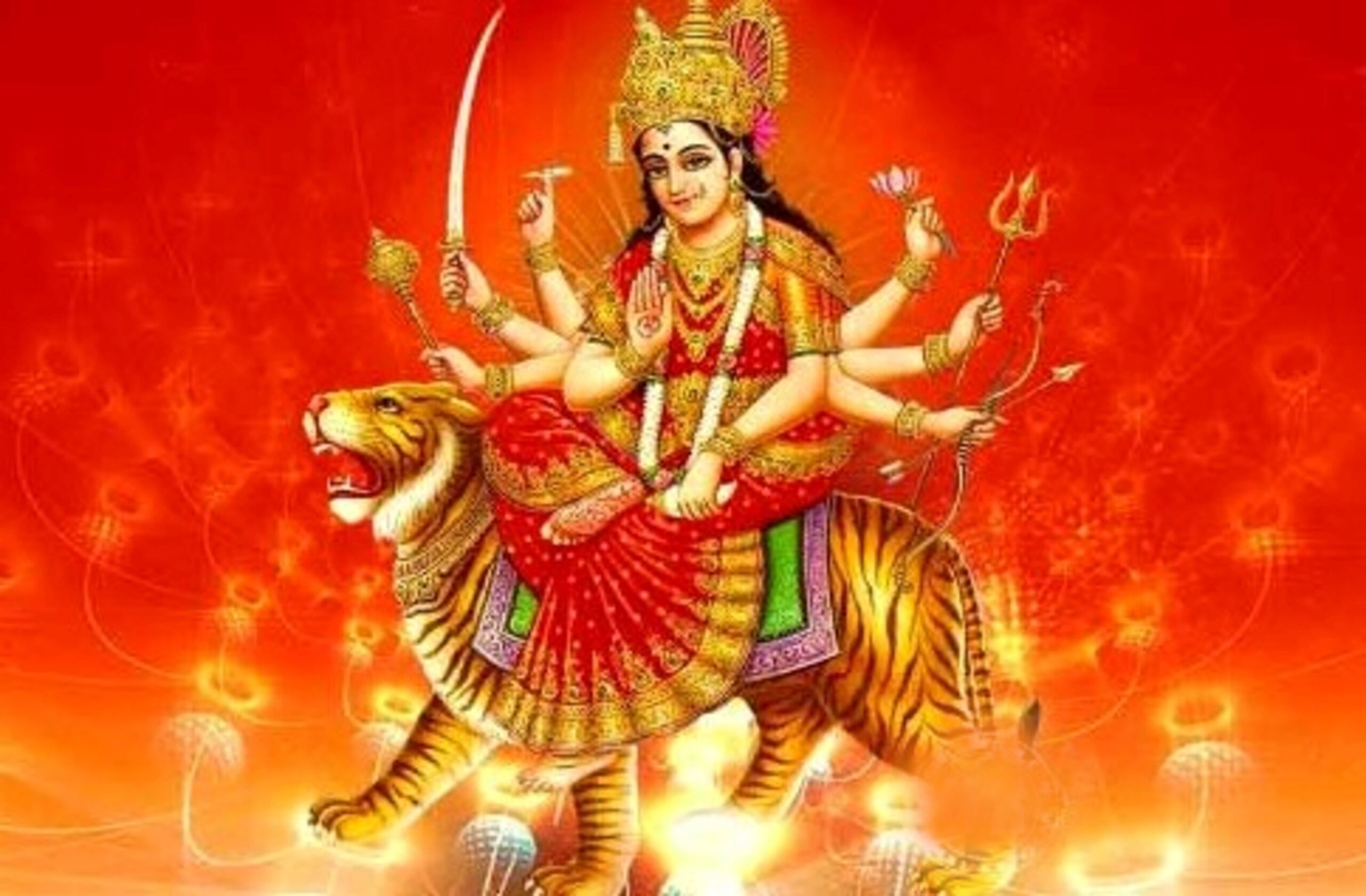
There is no certain historical evidence of origin of Durga Puja in Bengal, however, as per few scholars the worship of Devi Durga became popular in Bengal during the medieval era, marked by Muslim invasions. The celebration underwent substantial changes and gained popularity during the colonial rule. Which was once celebrated only by the royalties and zamindars (landlords), gradually became a public festival. Today’s Durga Puja or Durgotsav is completely ‘Sarbojanin’ (for all the people) affair where families voluntarily take part in organizing the pujas. However, even today a few of those families are still following their tradition and celebrating the arrival of goddess.
Making of the Idols of Devi Durga
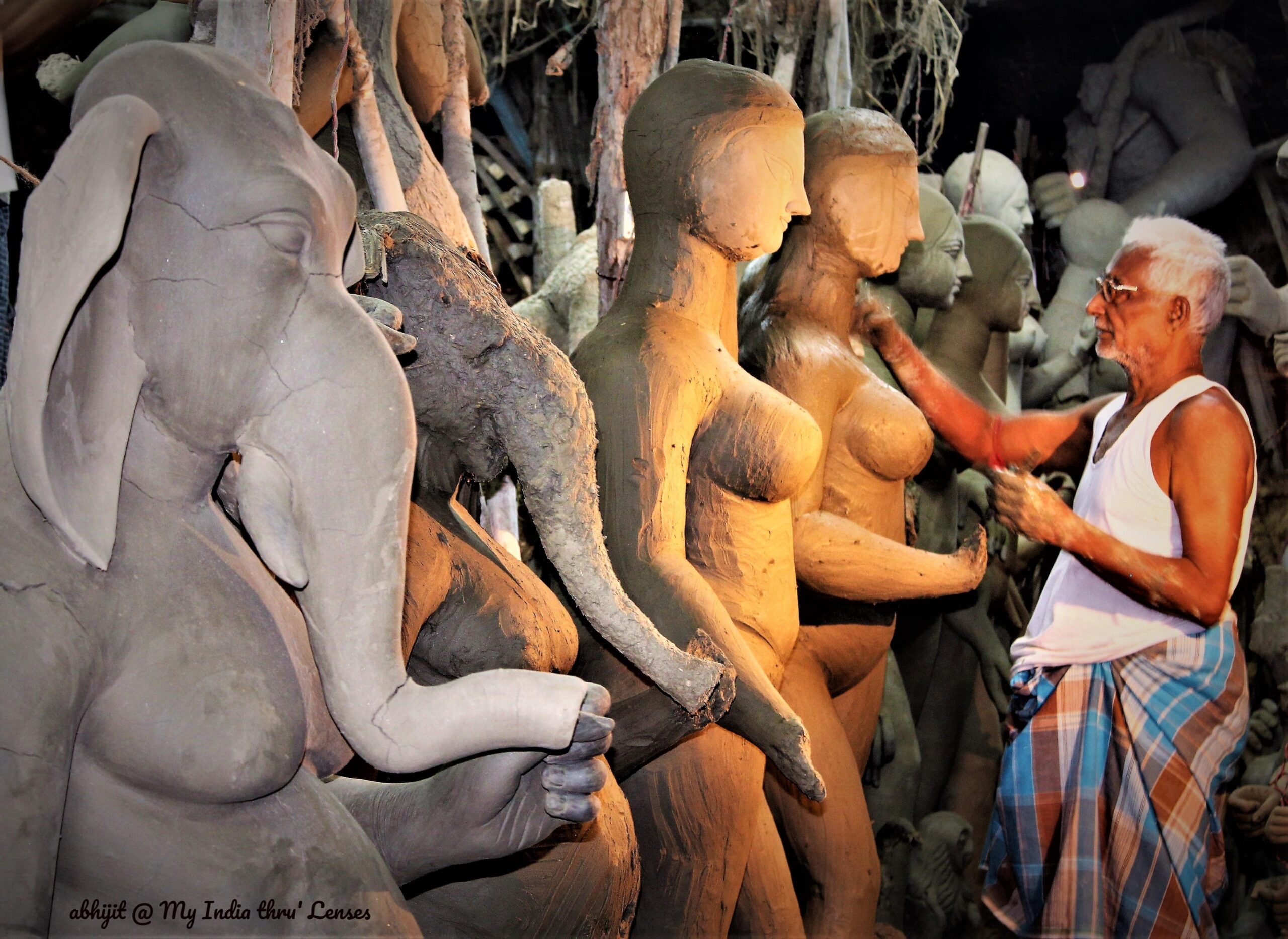
There are many places in Bengal where Durga idol is made. However, the first name which comes to our mind and which is quite synonymous with this festival is the Kumortuli in north Kolkata. It’s the house of few hundreds of artisans who have kept the tradition of idol making intact. Needless to say, with the touch of their scalpel and paint brush they infuse life in clay idols, which are shipped to the different parts of our country and even across borders. Before puja, this place becomes heaven for photographers. The Kumortuli authority issues season pass so that the photographers can freely roam around the place, however with much caution that they don’t touch or damage any idol or accessories.
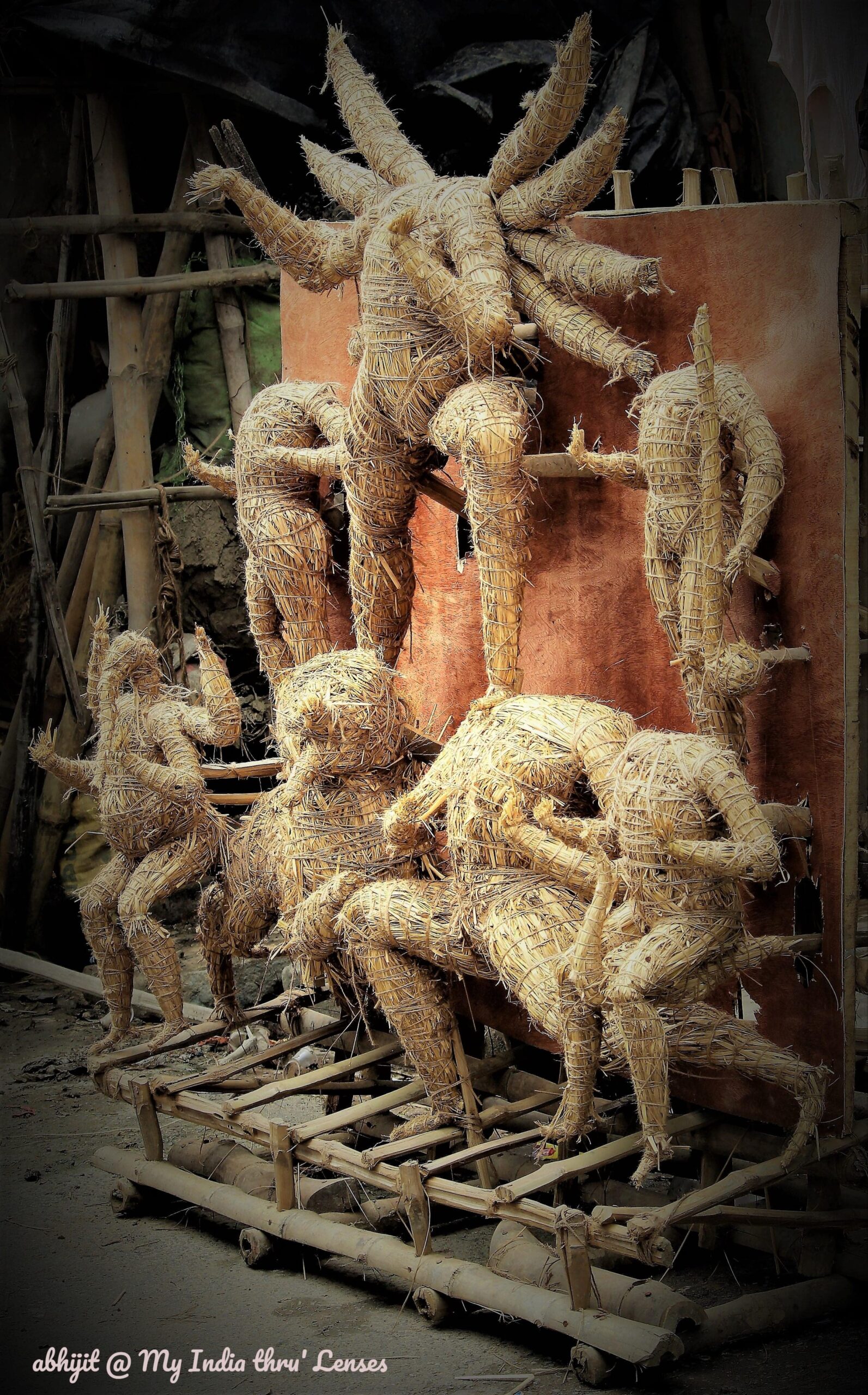
Nowadays themes have become predominant on the traditional Durga idol. Whatever might be the theme the main components of the idol remain the same. According to Hindu rituals, four components which are of utmost importance for the preparation of Durga idol are mud from the banks of the river Ganga, cow urine, cow dung and soil from a prostitute's land or Nishiddho Pallis.
We all know the significance of river Ganga and cow in our Hindu dharma, however, soil from a prostitute’s home! It’s believed that men who visit prostitute’s home leave behind their virtue & piety at the doorstep to enter the world of lust & sin. The soil in the courtyard imbibes the virtues and becomes holy. As per another thought based on the studies of the Vedas, it’s believed that worship of Devi Durga is incomplete without paying respect to the Navkanyas, Nati (dancer), Vaishya (prostitute), Brahmani (Brahmin girl) etc., who represent the different sections of our society. Hence, as a sign of respect, the soil is used in Durga idol.
Nationwide Celebration
The celebration of Durga Puja or Durgotsav is not limited to West Bengal, it’s rather a pan-India celebration. Actually, it’s celebrated in several countries of the world. Durgotsav is 5-day celebration in Bengal or in places where Devi is worshipped as per the Bengali Sanatani tradition. But it’s a 9-day affair known as Navratri in other parts of India. In those 9 days, 9 manifestations of the goddess, Shailaputri, Brahmacharini, Chandraghanta, Kushmanda, Skandamata, Katyayani, Kalaratri, Mahagauri and Sidhidatri, are worshipped. In North & West India Navratri puja is followed by Ram Lila & Ravan Vadh on the auspicious occasion of Dussehra. It is believed that on this day Lord Rama destroyed the demon king Ravana. Dances like Garba & Dandia are part of this 9-day celebration primarily in Gujrat & other Western parts of India. In South, throughout these 9 days Saraswati, Parvati and Laxmi are worshiped. In Mysore, this 9-day celebration starts with the worship of Goddess Chamundeshwari. Mysore Dussehra is a grand affair. The Mysore Palace gets beautifully illuminated on this day. The grand procession of elephants is a striking feature of this celebration.
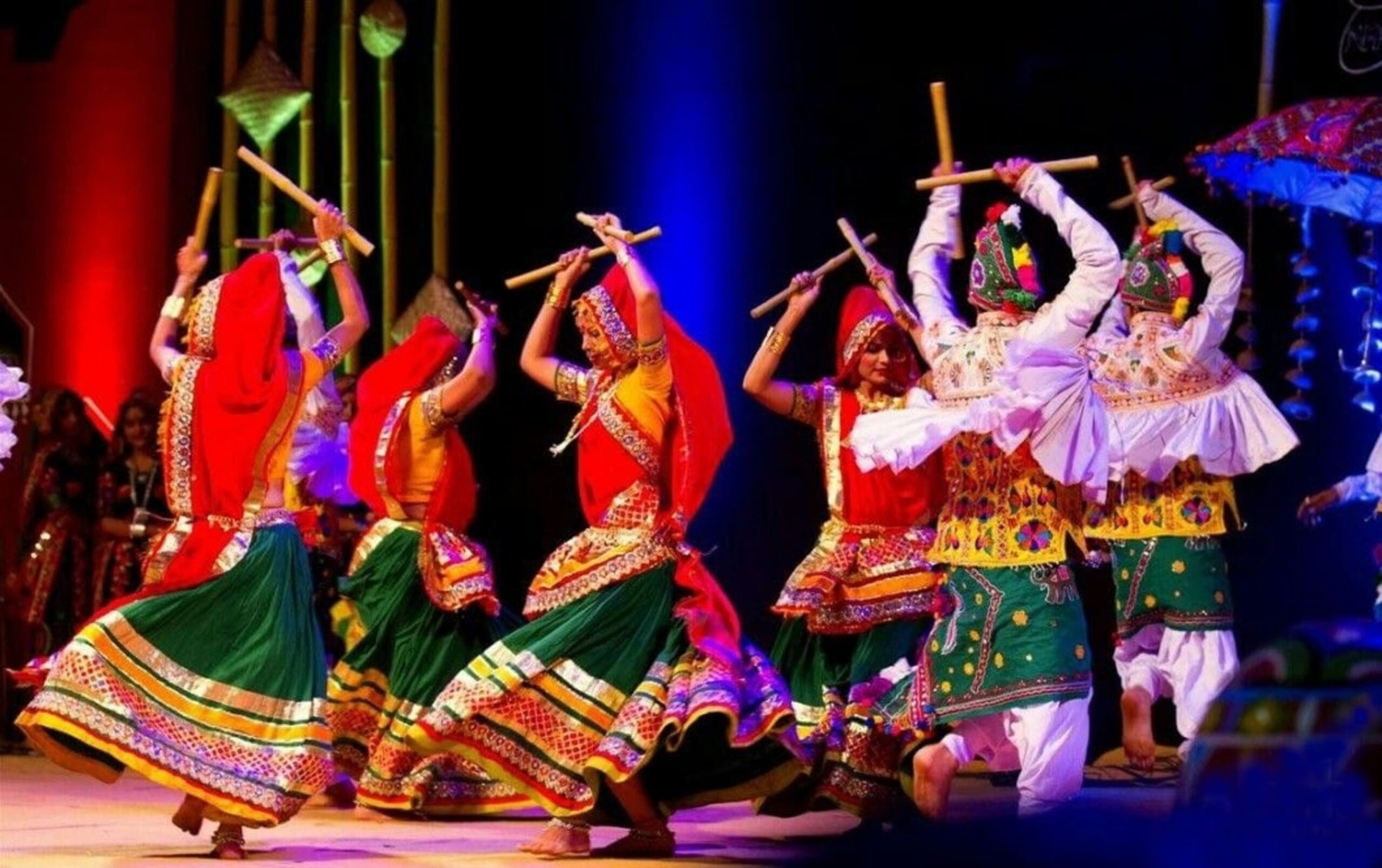

Coming to Bengal / East India, Mahalaya indicates the initiation of this grand celebration. On this auspicious day, with the first ray of the sun Devi Pakkha starts when people pay homage to their ancestors. Irrespective of the place where they are, people ensure that they don’t miss the charm of listening to the Chandi Path, which gets played in the radio station at 4 am. Listening to the song “Bajlo tomar alor benu” and witnessing the morning sky change its colour, literally get us into the feeling of “Ma Ashche”. In this part of the country Devi is treated as the daughter who comes to her maternal home with her children annually. It is believed that on Mahalaya she starts her journey from Mount Kailasha and reaches her parents’ home on Shashthi, where she is welcomed with lots of love, marking the beginning of the 5-day celebration.
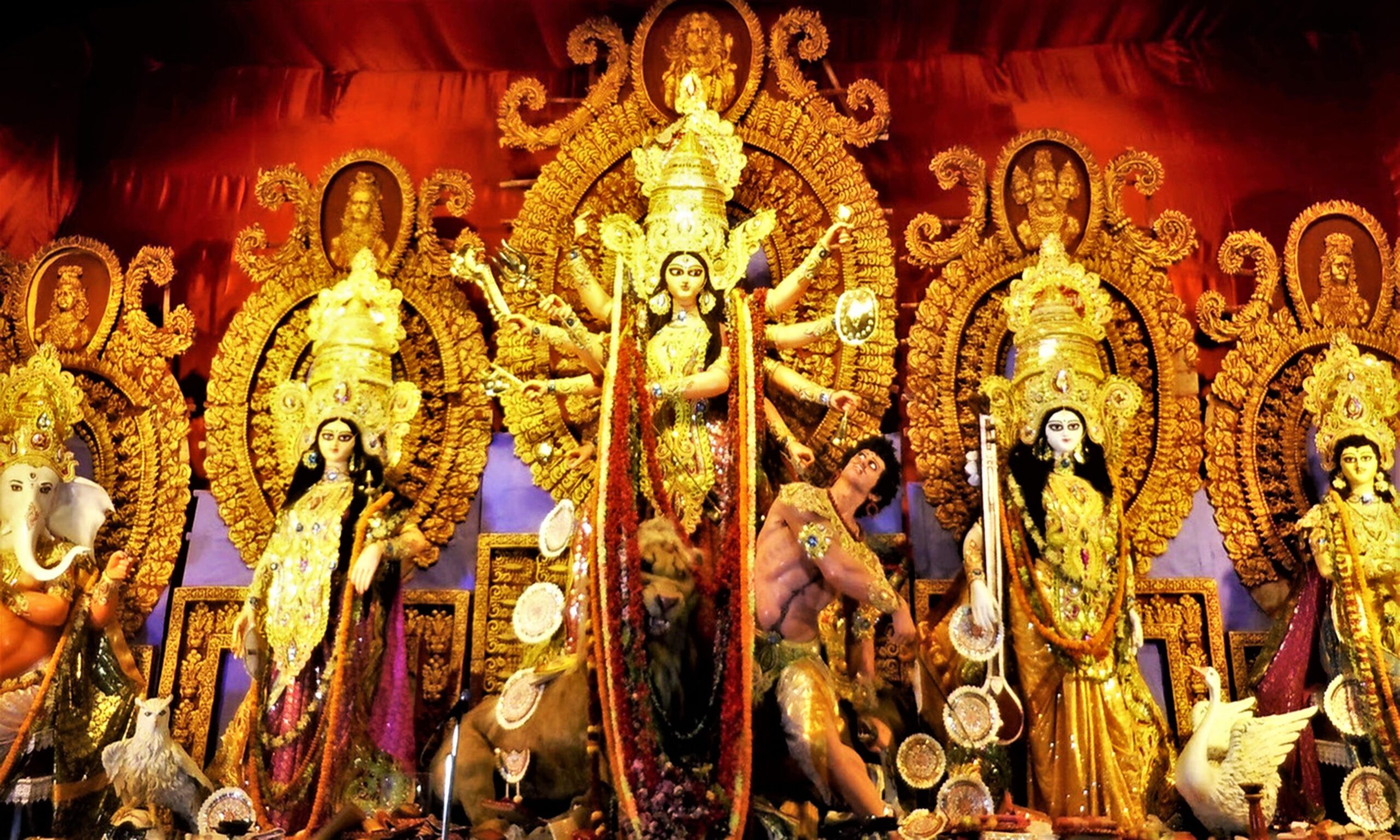
The next day is Maha Saptami followed by Durga Ashtami or Maha Ashtami and Navami. Sandhi Puja is observed in the transition period of Ashtami and Navami. As per the legends, while Devi Durga was busy in her combat with Mahishasura, two of his generals, Chondo and Munda, attacked her from behind. Enraged by this breach of battle rules, Devi opened her third eye and her Chamunda avatar sprang out. Devi Chamunda is a fearsome form of Devi Chandi/Durga. Sandhi Puja is celebrated to worship Devi Chamunda. It is considered the most pious and powerful period of the festival. During this ritual 108 lamps are lit and 108 lotus flowers are offered. As per Krttivasa Ramayana, Lord Rama offered 108 blue lotuses to Devi Durga on this auspicious time.
Sandhi Puja marks the beginning of the Maha Navami, the last day of Navratri and Durga. It is believed that on Navami Devi Durga finally defeated the demon king Mahishasura. Unlike the other days of Durga Puja, on this day fish is offered to Devi Durga. Navami is followed by Vijaya Dashami or Dussehra. This day marks the victory of good over evil. Ravan Vadh is celebrated, primarily in North India, with fireworks and crackers to celebrate the triumph of Lord Rama. In West, mostly in Gujarat, Dandiya & Garba is performed. South India observes the worship of Devi Saraswati on this day. The picture is a bit different in the Eastern region. When the rest of the India celebrates Dussehra, the people of East bids farewell to Devi Durga, with heavy heart. Devi Baran followed by Sindur Khela is performed before Devi Durga. It is believed that on Dashami, Devi leaves for Mount Kailasha with her children.
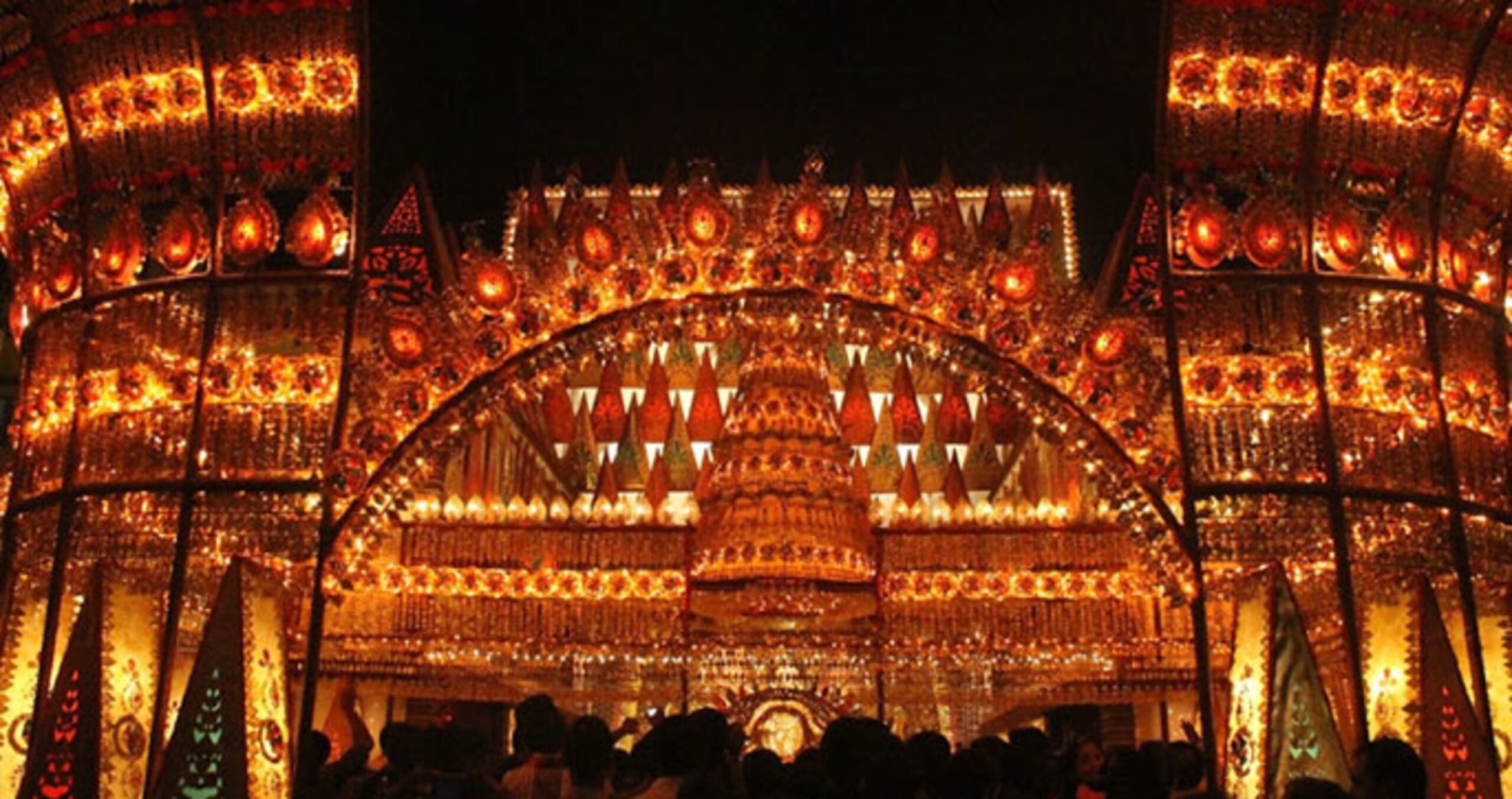
There might be differences in the way worship is done on each day, but the flavour of festivity is the same. The beats of dhak, graceful dhunachi naach (dance with incense burner), elaborate lightings, beautiful pandals, thousands of people doing pandal hopping and mouth-watering street foods are intrinsic part of this celebration.
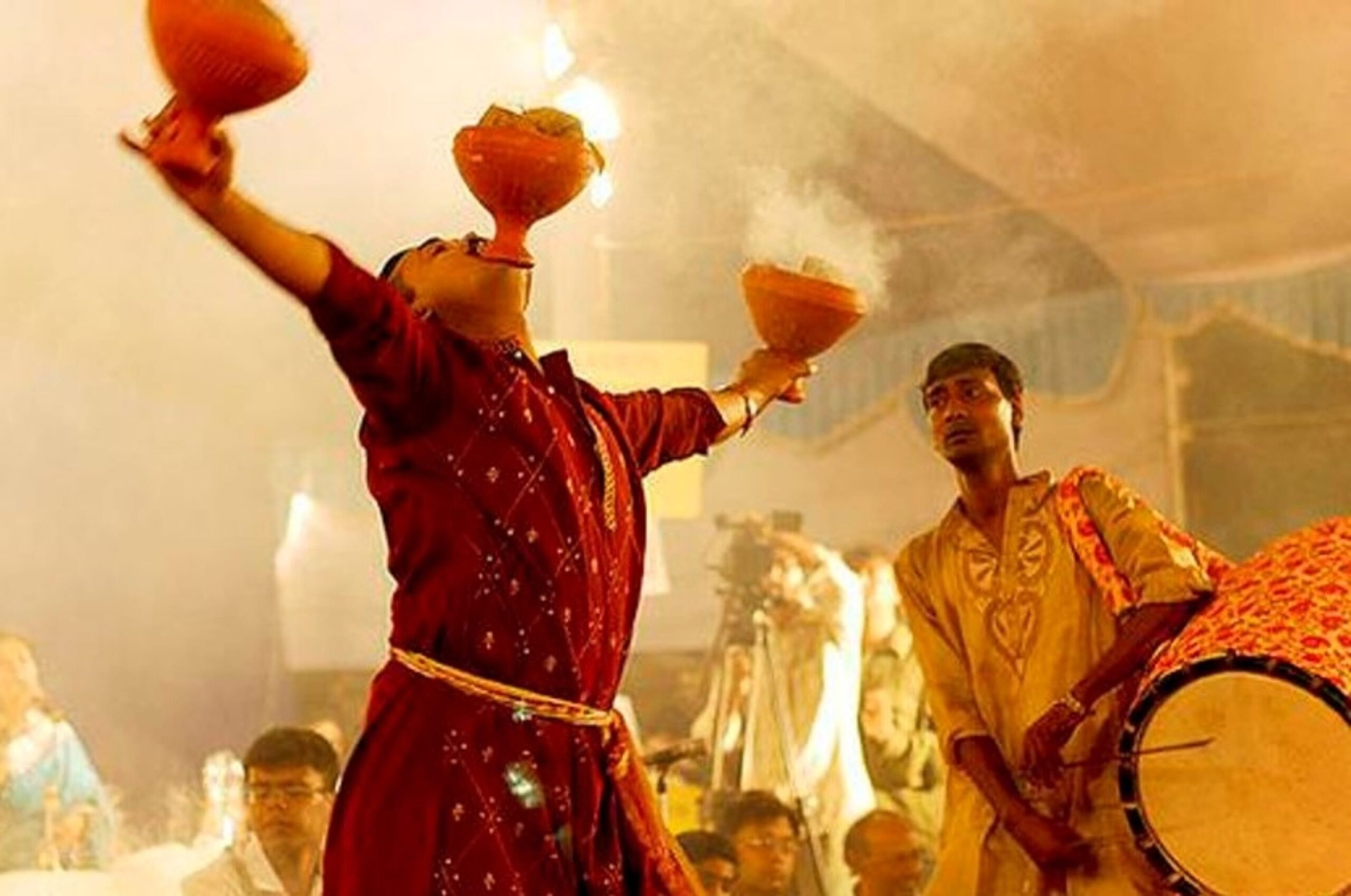
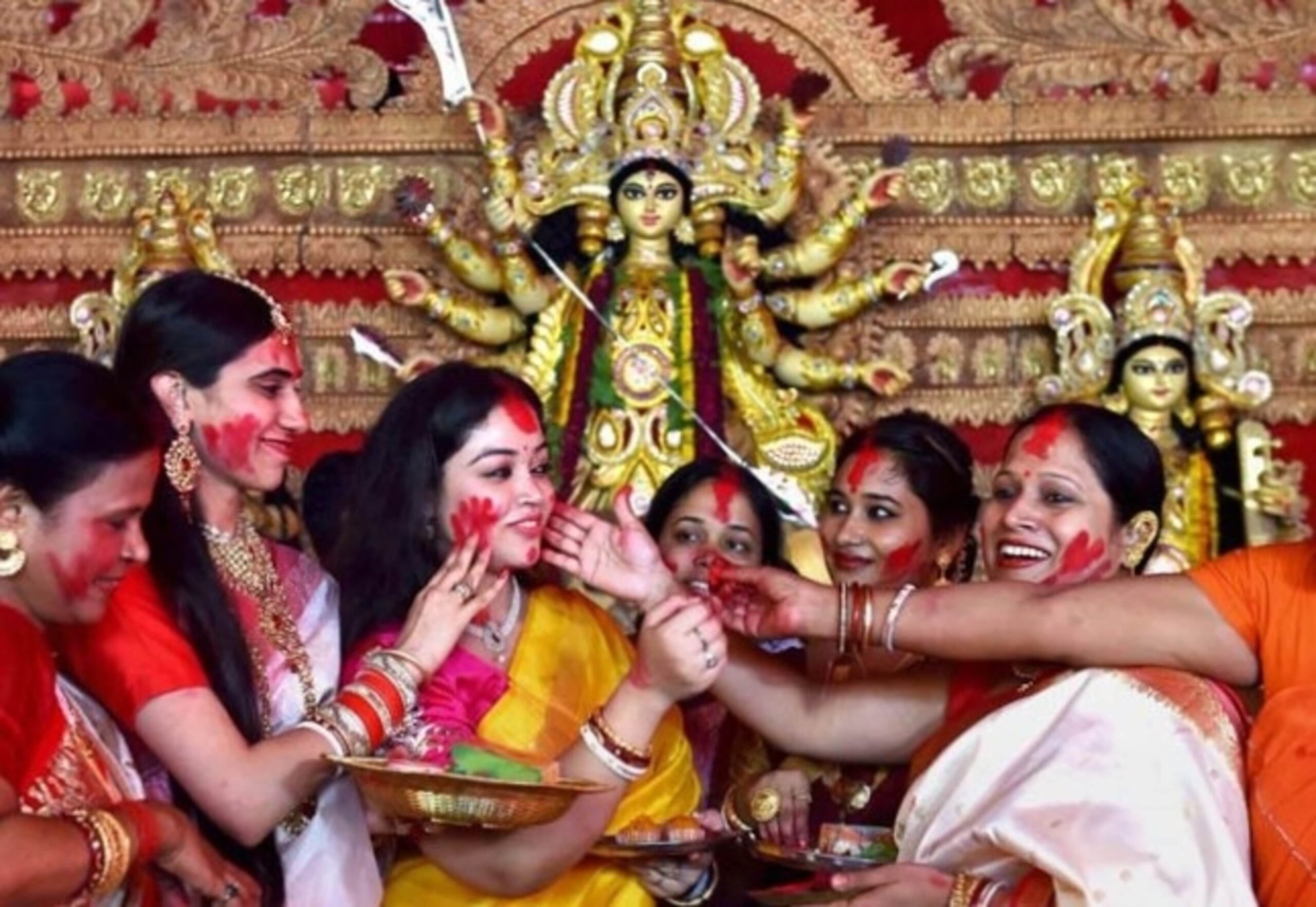
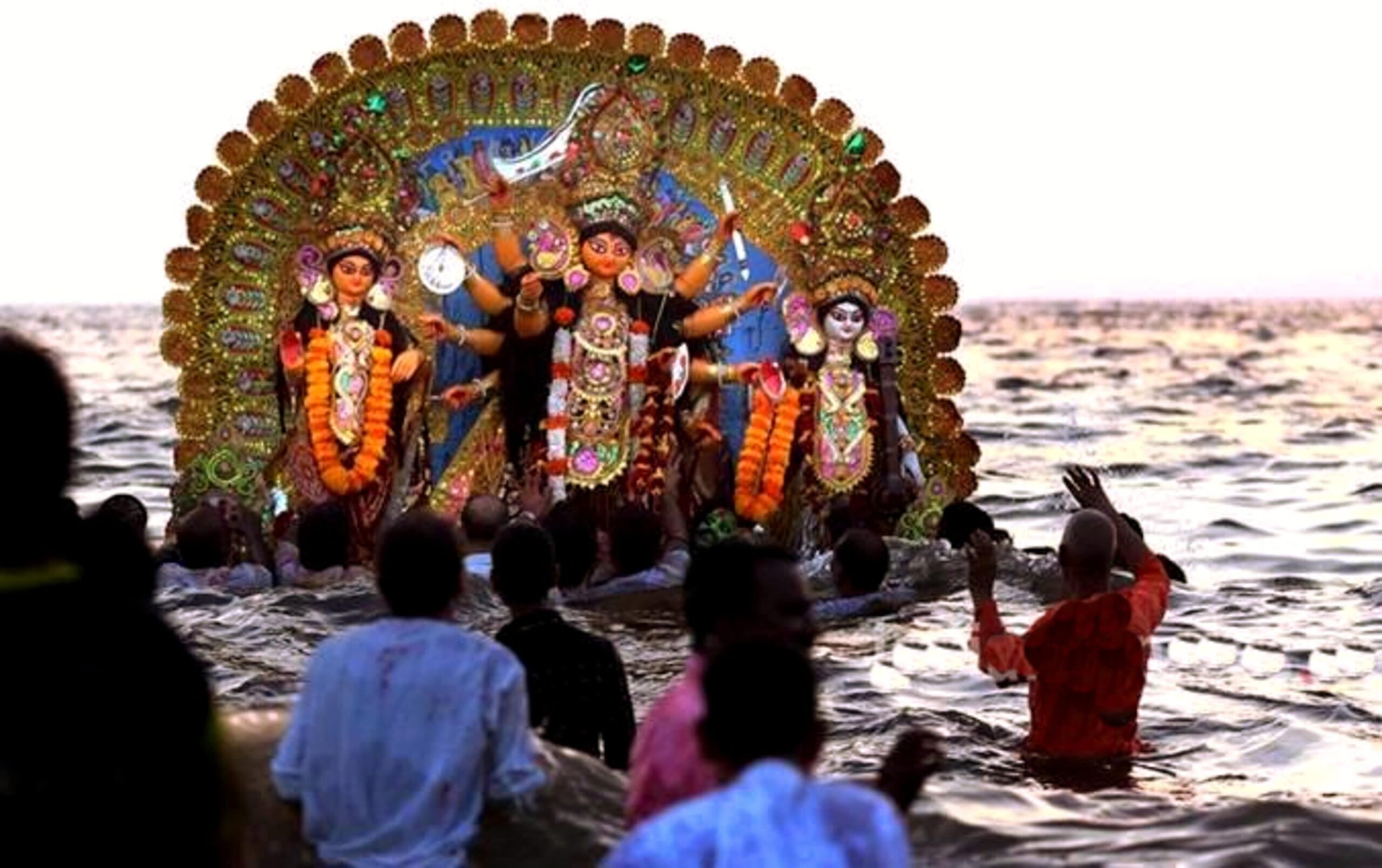
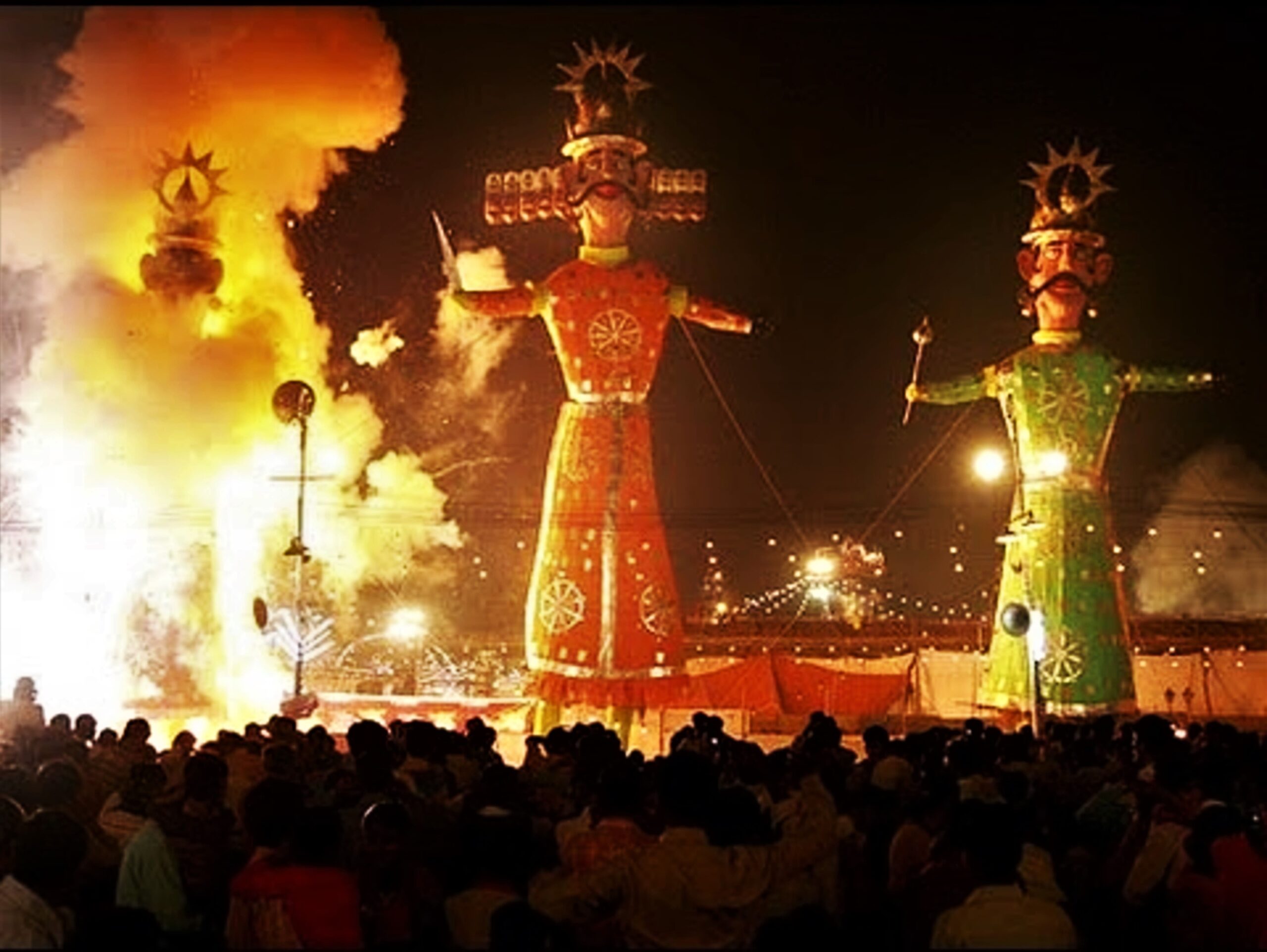
Food
Any celebration is incomplete till the time you satiate your taste buds. In India we have varieties of foods and sweets for all occasions which varies from region to region. In the North, we find kuttu puri, sabudana khichdi, kheer etc. in the menu, in East, we see people offering pulao, rice khichdi or luchi (a form of puri), rice kheer etc. to goddess Durga. It’s the time of the year where people keep aside their diet charts and try to enjoy with their near and dear ones.
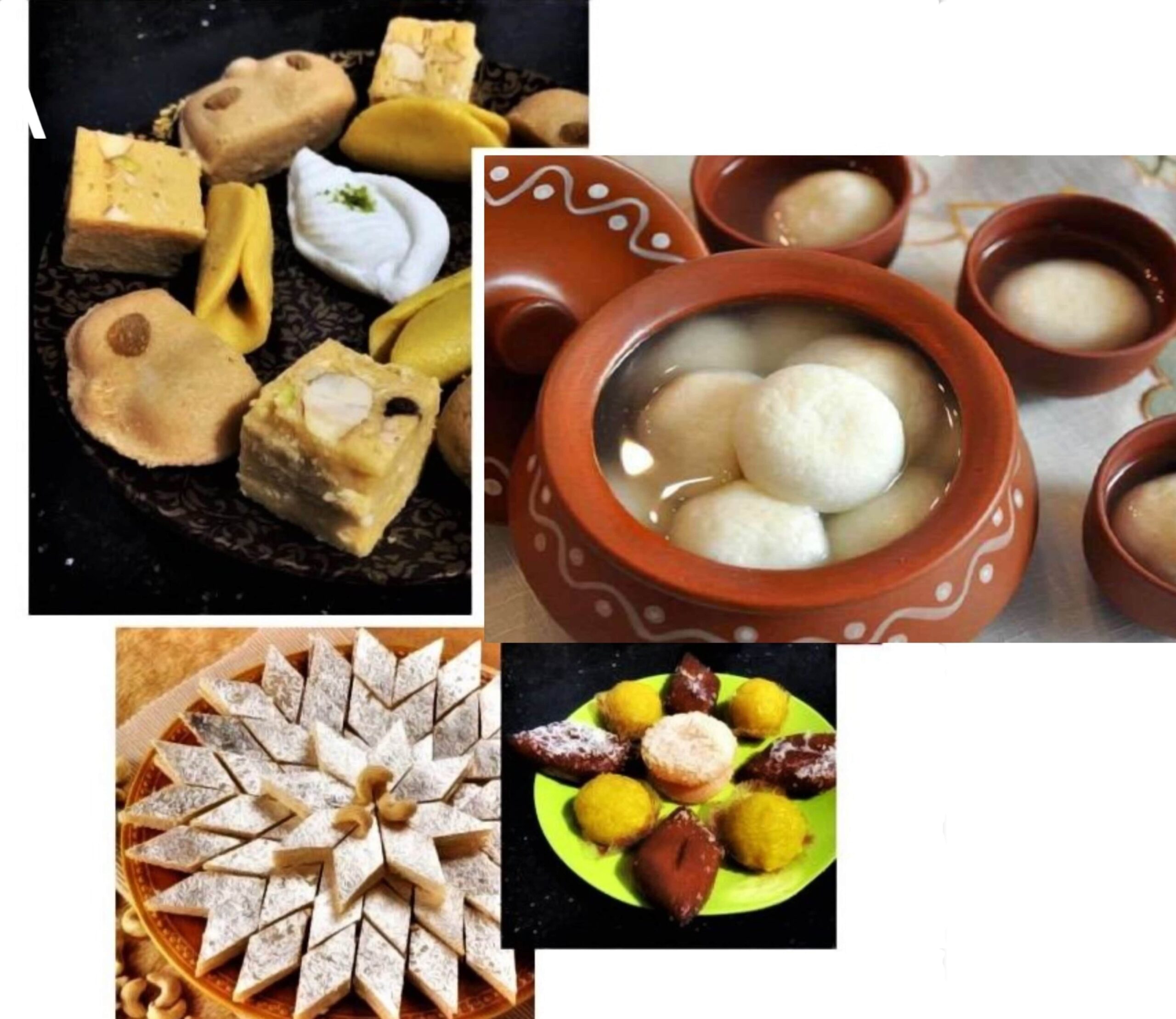
Sweets also play a great role here. You may get tired of counting the varieties available in India during this Navratri or Dura Puja. Indians have sweet tooth which very well gets justified in any festival. You may enjoy a variety of sweets including laddoos, peda, rasgulla, Sandesh and gulab jamun.
Durga Puja abroad
As I have mentioned above, Durga Puja is not only restricted to India, it’s well celebrated in our neighbouring countries like Nepal and Bangladesh and even in other countries like USA, UK, Canada, Australia etc. where it is mostly celebrated as an extended Bengali festival. The people straying abroad can feel the essence of staying at home by staying away from home. In Nepal, Kumari Pujan and animal sacrifice is observed during this Navratri.
Durga Puja and 2020
Durga Puja has always been special to everyone. It not only creates the mood of celebration but also generates living for many. Thousands are people are involved in making the puja a success. But this 2020 has changed everything. The puja organizers have reduced the budget, resulting in less involvement of people. This year even the fun of overnight pandal hopping is at stake. Each one of us have faced the heat of this ongoing pandemic. Although this pandemic will probably curb the glam & glitz of the celebration, the belief & feelings behind Navratri or Durga Puja will certainly remain intact.